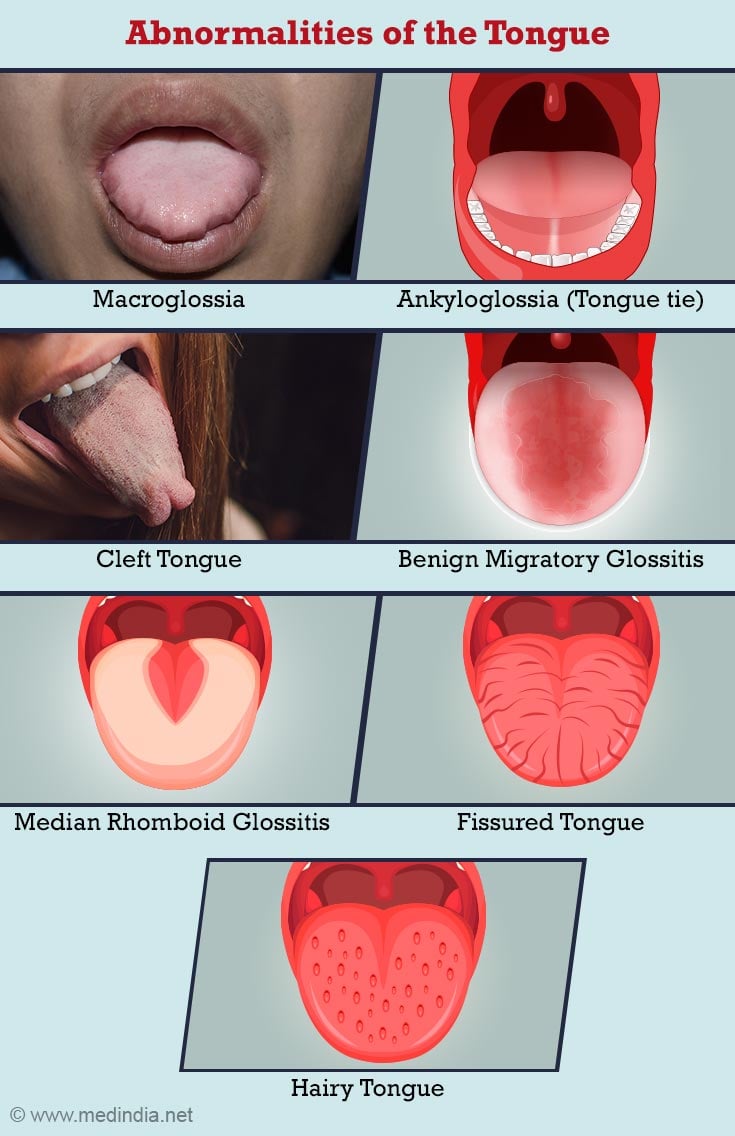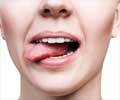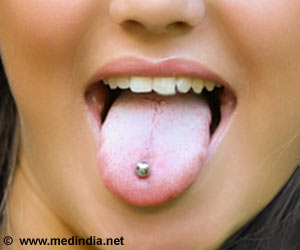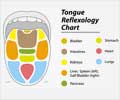- Macroglossia - (https://fdna.health/symptoms/microglossia/)
- Macroglossia - (https://my.clevelandclinic.org/health/diseases/22544-macroglossia)
- Tongue-tie (ankyloglossia) - (https://www.mayoclinic.org/diseases-conditions/tongue-tie/symptoms-causes/syc-20378452)
- Isolated congenital bifid tongue - (https://www.ncbi.nlm.nih.gov/pmc/articles/PMC3304211/)
- Fissured tongue - (https://dermnetnz.org/topics/fissured-tongue)
- Median rhomboid glossitis - (https://en.wikipedia.org/wiki/Median_rhomboid_glossitis)
- Geographic tongue - (https://www.mayoclinic.org/diseases-conditions/geographic-tongue/symptoms-causes/syc-20354396)
- Black Hairy Tongue - (https://www.mayoclinic.org/diseases-conditions/black-hairy-tongue/symptoms-causes/syc-20356077)
About Tongue
The tongue is a muscular organ located in the mouth that plays a crucial role in various functions such as speech, taste, chewing, and swallowing. The tongue occupies a large area in the oral cavity covering the floor of the mouth. It is below the palate, and is surrounded by teeth on either side. Together with the palate, it performs the function of swallowing.
A host of things can go wrong with the formation of the tongue, since it develops from multiple sources, rather than a single progenitor process. Most of the developmental disturbances of the tongue are related to its size and shape, though structural defects also exist.
Microglossia
This is a condition where the size of the tongue is abnormally small. Cases of complete absence of the tongue have also been reported and is termed as aglossia. Fortunately, it is a rare condition.
Obviously, a tiny tongue will pose many difficulties related to speech and swallowing. There is no treatment for this condition, and the affected person will have to train their tongue to the best of their abilities(1✔ ✔Trusted Source
Macroglossia
Go to source).
Macroglossia
This is a much more common condition than microglossia, where the tongue is highly enlarged. An enlarged tongue may be congenital, when it is associated with generalized muscular hypertrophy or hemi hypertrophy.
Secondary macroglossia is that condition that occurs in conjunction with some other conditions like a tumor of the tongue, hemangioma and acromegaly. Acromegaly is a hormonal disturbance where growth hormone is secreted in excess of the requirements of the body.
Macroglossia causes disturbances in the teeth as well. Due to the continuous pressure exerted by the tongue, scalloped appearance occurs due to the indentations or impressions on the sides of the tongue caused by pressure from the teeth.
Macroglossia is a prominent feature in Beckwith's hypoglycemic syndrome, where neonatal hypoglycemia predominates along with umbilical hernia and post-natal gigantism. The treatment of macroglossia involves the removal of the cause that gives rise to this condition. At times, surgical stripping of the tongue to reduce the heavy musculature is also warranted(2✔ ✔Trusted Source
Macroglossia
Go to source).
Ankyloglossia
Ankyloglossia occurs as a result of the fusion of the lingual frenum to the floor of the mouth. However, complete fusion rarely occurs; a partial ankyloglossia or "tongue-tie" is a much more common condition.
This leads to a myriad of speech problems such as lisping and stuttering. The treatment is to surgically sever the connection between the frenum and the floor of the mouth(3✔ ✔Trusted Source
Tongue-tie (ankyloglossia)
Go to source).
Cleft tongue
Cleft tongue is a condition where the tongue has a cleft running right across it horizontally or vertically, although reported cases have had vertical clefts.
Complete clefting is extremely rare, and occurs as a result of lack of developmental forces to push both halves of the tongue towards each other. Partial clefting presents as a deep groove in the middle of the tongue and is a common feature in the oro-facial-digital syndrome. Cleft tongue causes difficulty in eating as food gets stuck in the cleft(4✔ ✔Trusted Source
Isolated congenital bifid tongue
Go to source).

Fissured Tongue
This condition is also referred to as scrotal tongue since the tongue often resembles the scrotum in this state. It is a benign condition characterized by one or more shallow or deep grooves or furrows (fissures) on the top surface of the tongue.
Here a transverse groove is present on the tongue from which numerous smaller grooves radiate all over the surface of the tongue. The condition is usually painless and the only problem is with the food debris getting stuck in the grooves. These have to be cleaned by gauze or a toothbrush(5✔ ✔Trusted Source
Fissured tongue
Go to source).
Median Rhomboid Glossitis
This condition is a classic developmental disorder of the tongue. It is a failure of the developmental apparatus during the organogenesis of the fetus.
A structure called "tuberculum impar" is supposed to withdraw when the two halves of the tongue come close to each other during development. When this does not happen, the structure gets trapped in between the two halves of the tongue, thereby creating an area, which looks like a bald patch on it.
Median Rhomboid Glossitis has also been strongly linked with the fungal infection caused by Candida albicans, where the tongue has an ovoid white patch just before the entry into the esophagus. Sometimes a flat-raised area can also be discerned. This condition is reportedly thrice as common in men as in women. The exact cause for this occurrence is not known, although hormonal links have been suggested.
There is no known treatment for MRG, though doctors have tried to administer anti-fungal agents, it gave mixed results(6✔ ✔Trusted Source
Median rhomboid glossitis
Go to source).
Benign Migratory Glossitis
This condition is also called a Geographic Tongue due to the behavior of the lesions, which tend to "migrate" from one area of the tongue to another.
The exact cause for the condition remains unknown, although it tends to occur with more intensity in cases of emotional stress. Females are twice as affected as males, but no racial differences have been observed.
The lesions here are yellowish-white or deep red in color depending on the papillae that are affected. The area of the lesion loses its epithelial lining, making hot foods seem hotter. The areas of desquamation (epithelium peel-off) persist for a while, regress spontaneously, but reappear over time.
Patients with this condition are usually asymptomatic and the lesions themselves are an incidental finding during routine check-up. Again there is no known treatment for the disease, but some doctors have reported moderate success with vitamins and mineral supplements(7✔ ✔Trusted Source
Geographic tongue
Go to source).
Hairy Tongue
Black hairy tongue is a condition characterized by the hypertrophy of the filiform papillae of the tongue as well as desquamation of the area where this occurs.
If the papillae become stained with tobacco, they appear black in color and look like hair on the tongue. The tongue could also appear yellowish-white if foodstuff is trapped within these papillae. Anemia and gastric troubles are said to have a significant bearing on the development of this condition.
Antibiotics like penicillin and Aureomycin are also responsible for the staining of the papillae. Smoking remains the biggest cause for the occurrence of the condition. Sometimes, head and neck irradiation after cancer may also produce this condition. The only treatment of the condition is to keep the tongue as clean as possible by using a toothbrush(8✔ ✔Trusted Source
Black Hairy Tongue
Go to source).
Tongue abnormalities can manifest in various ways, often leading to discomfort and concerns such as bad breath. While many tongue problems may be linked to harmless conditions like allergic reactions or poor oral hygiene, it's crucial to seek professional evaluation when encountering persistent issues.
Treatment options range from simple interventions like using a tongue scraper and maintaining good oral hygiene to addressing underlying medical conditions. Understanding the underlying causes, including dry mouth, blood vessel abnormalities, or abnormalities on the floor and sides of the tongue, is essential for effective management. Always consult a healthcare provider for a thorough assessment and personalized guidance on managing tongue problems to ensure optimal oral health.
Note: It is essential to consult a healthcare professional for a proper diagnosis and personalized treatment recommendations if you or someone you know is experiencing any tongue-related issues.










